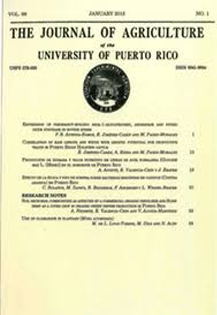Abstract
Field fires can modify soil nutrient cycling and alter soil microbial communities (SMC), although the latter is not well understood. In the southern region of Puerto Rico, field fires have become a significant problem during the dry season. To mimic the effects of a field fire, we performed prescribed fires on a hillside at the Juana Díaz Agricultural Experiment substation in October 2015 and March 2017. A complete randomized block design was established in Yauco soil (Typic calciustolls) that included the following treatments: negative control (unburned), positive control (burned plots, no remediation), mulching treatment (burned plots remediated with Leucaena spp. mulch), and surfactant treatment (burned plots remediated with a surfactant). In the first burning (2015), soil samples were collected before burning and at 30, 180, and 420 days after burning (DAB). In the second burning (2017), soil samples were collected at 30, 90, and 270 DAb. soil physicochemical properties and microbial community structure were assessed using phospholipid fatty acid (PLFA) analysis. Overall, burning increased soil exchangeable Ca2+ (except after 30 DAB in the second burning) and decreased exchangeable K+ when compared to unburned soils. compared to unburned plots, total fungal PLFA was significantly lower in burned plots with or without mulch and surfactant treatments, and total bacterial PLFA did not differ between burned and unburned plots after 30 days. Total microbial biomass was significantly (P<0.05) higher in mulch and surfactant treated burned soil compared to unburned and burned plots without treatment after 90 DAB (2017) and 420 (2015) DAB. The use of mulch and surfactant treatments in prescribed burning fields increased microbial communities 90 DAB. This study emphasizes short-term changes in microbial communities and suggests they are highly resilient to disturbances after prescribed fires.

